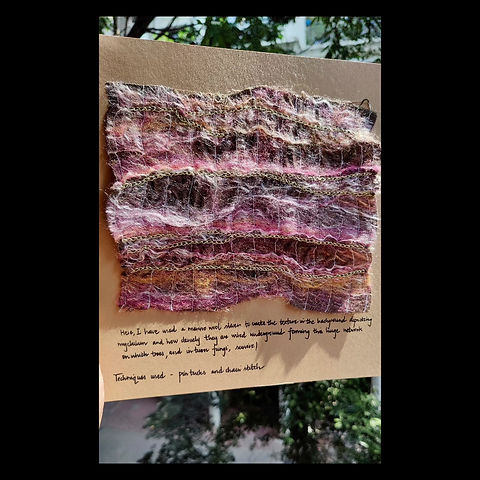The Veiled Interplay: Surface Embellishment
This project aims to develop a collection using surface embellishment and fabric manipulation techniques. The name draws its inspiration from the intricate workings of the Wood Wide Web, which serves as the foundational framework supporting the flourishing of various life forms and ecosystems. The mycelium's intricate structure facilitates seamless communication among a multitude of organisms.
The Concept:
I’ve always been fascinated by the way things transform. A solid log becomes soil, sugar becomes alcohol, a lump of dough rises into bread. Fungi—metabolic wizards with a breathtaking capacity to arrange and rearrange the world. And without their powers of decomposition, our lives would be inconceivable. If nothing decomposed, the earth would pile up kilometers deep with the bodies of animals and plants. Just imagine! Composers make; decomposers unmake. And unless decomposers unmake, there isn’t anything that the composers can make with.
Life is a story of intimate collaboration. Fungi form intricate networks that lace through the soil and scavenge for nutrients they trade with their plant partners. Mycelium is ecological connective tissue, a living seam by which much of life is stitched into relation, and is a dense mesh of fungal tissue that holds everything together. And this is the wood wide web via which plants communicate.
In parallel, this electrochemical connection between the roots and the plants is similar to how neurons work in the brain. The subconscious and unconscious influences our mind greatly without us realizing it. They are like the currents and winds that affect a ship’s course just as much as the captain’s rudder.
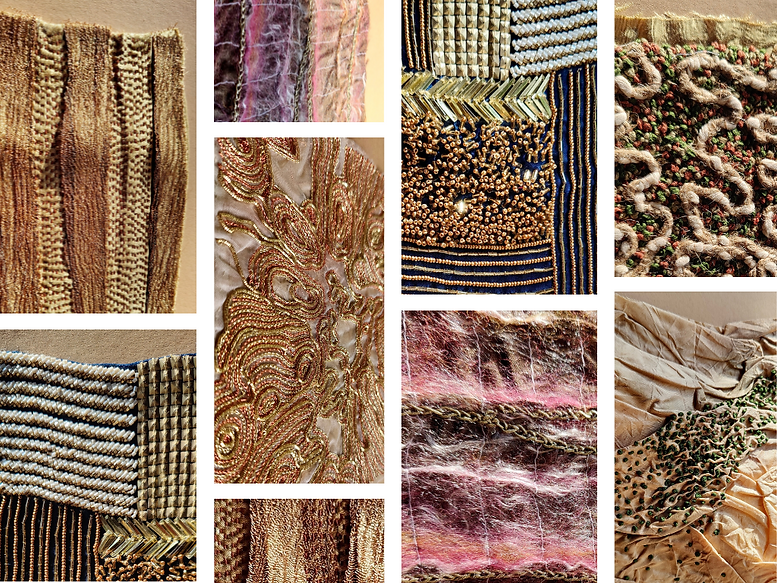
To have a deeper understanding of the topic, I decided to read a few extracts from books on fungi and mushrooms and how they play such a pivotal role in shaping the ecosystem as a whole. They establish the groundwork for other life to thrive. I realized that they have so much to offer than one could ever imagine. That’s when I decided to watch two documentaries on fungi and mushrooms, “Fantastic Fungi” and “The Kingdom: How Fungi Made Our World”.
They gave me a better understanding of their essential ecological roles as decomposers and they uncovered the extraordinary world of fungi and mushrooms and their role in human culture. I was astonished knowing about their hidden language and how well they communicate with the ecosystem.
Now let's get into some process work. I have been collecting photos of all kinds of lovely shrooms: big ones, tiny ones, redheaded ones, ones that look like jellyfish, and others that look like corals. Just look at those textures, fascinating!
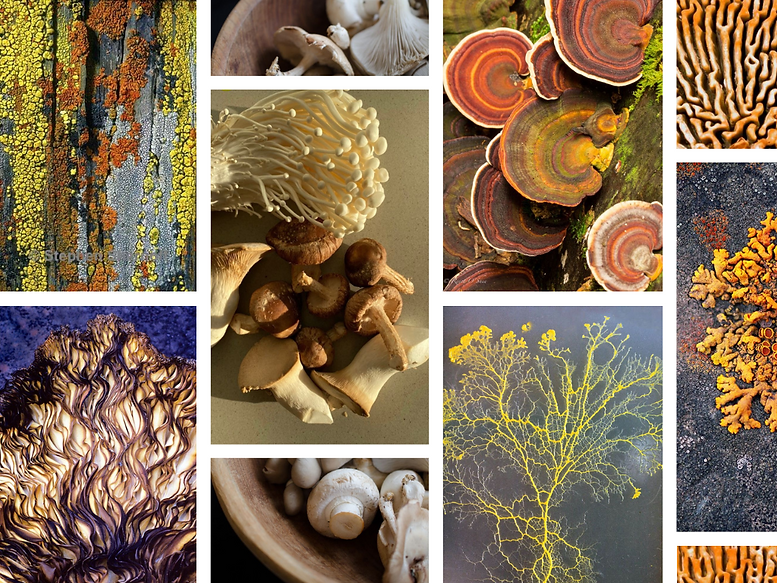
Each mushroom is a character of its own, making my job pretty easy- those textures were just popping up on paper without much effort!
But then I spent many hours understanding their textures, different varieties of shrooms, and even delving into other fungal forms like lichens. Subsequently, I brainstormed these details on paper to shape the textures while incorporating them with surface embellishment.
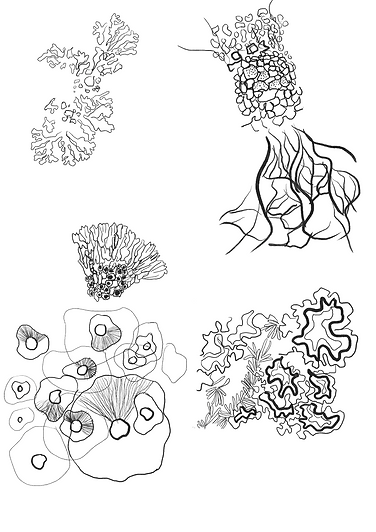
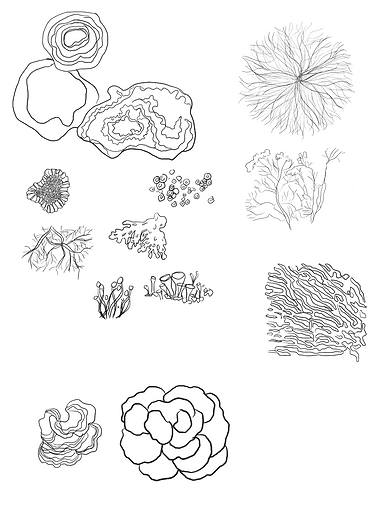
Then, I started working on the mood board and inspiration board along with the colour palette, respectively.
The mood board visuals eloquently convey the essence of this collection by capturing the profound concept of wholeness, the intricate interplay between tangible and intangible elements, and the tactile contours of form. This is artfully achieved through the intricate textures inspired by fungi.
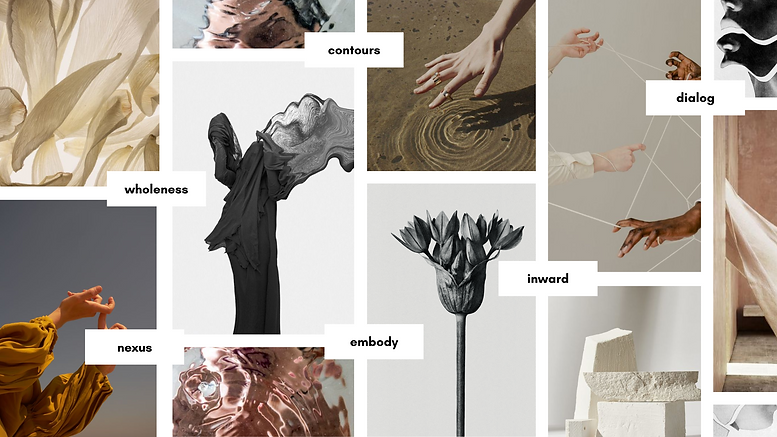
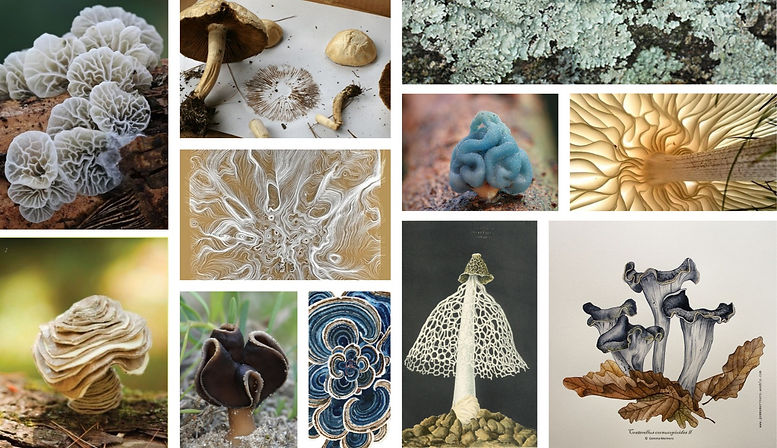
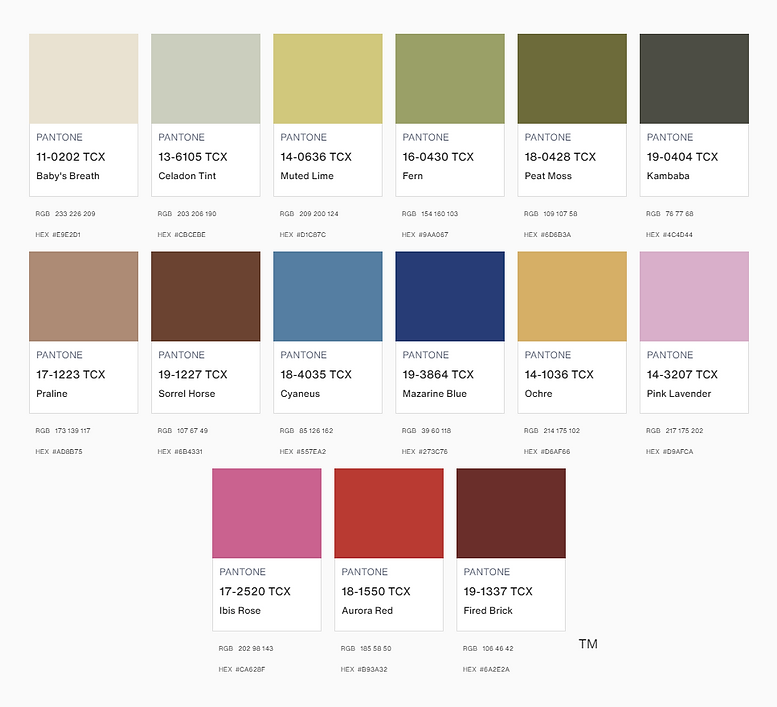
The next stage involves the creation of a comprehensive material board for the entire collection. Here, I carefully selected fabrics with diverse textures, including satin, linen-cotton, silk, organza, and a metallic mesh fabric. The highlight here was the harmonious interplay among these fabrics.
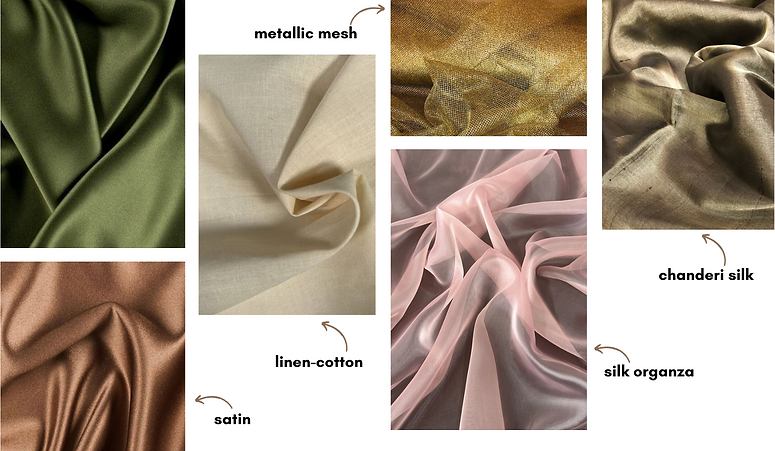
The most-awaited segment is here (drumroll please).
There are 7 final swatches and in every one of them, the texture plays an important role, and the interaction of the fabric with the embroidery and the materials used for it.
Every swatch took me hours of non-stop full-time embroidery, evolving from a rough pencil sketch into a finalized digitized illustration and followed by a completed embroidered swatch (wipes sweat off forehead).
Swatch 01:
A fabric swatch, crafted through intricate fabric manipulation techniques, inspired by the ribbed and grooved textures found on the surface of a mushroom cap. This is emphasized by the fabric folds and the French knots mirroring the organic essence and touch.
The fabric manipulation is achieved on a corkboard using T-pins and a fabric hardener spray. This step was repeated multiple times to give the fabric a 3-dimensional look.
Base fabric used: Linen-cotton
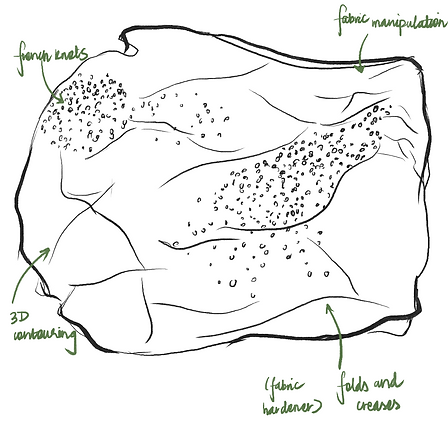
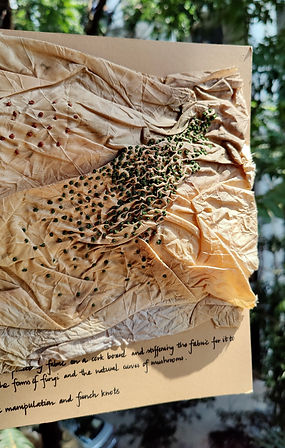

Swatch 02:
This illustrates the undersides of fungi which either feature thin gills or pores that are often dense and spongy. The thick French knots establish a plush and sponge-like foundation, with the braided components contributing to its texture and depth.
Base fabric used: Satin
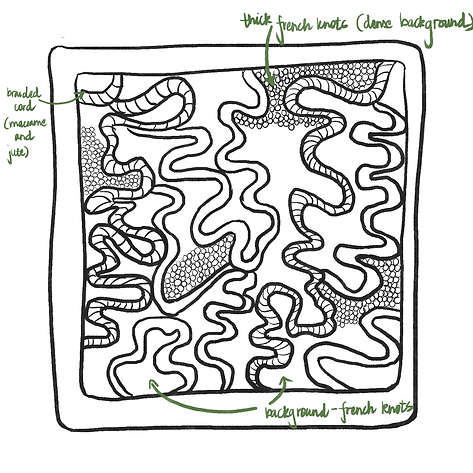
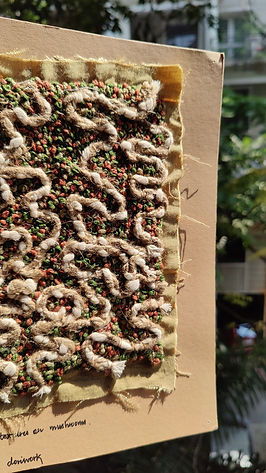

Swatch 03:
The intricate mycelium network is vividly represented through the use of a very thin layer of merino wool sliver, showcasing the complexity and seamless interconnections within the mesh. Linear chain stitches are used to accentuate the contours of this fungal web.
Base fabric used: Chanderi silk
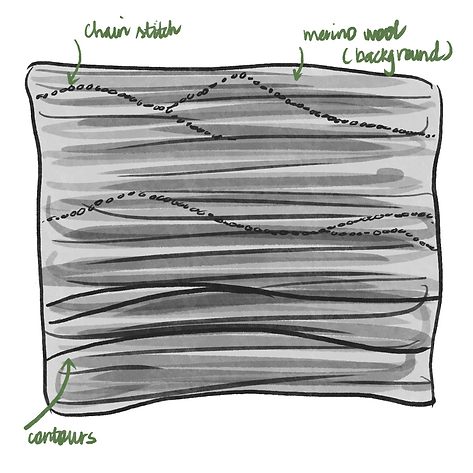
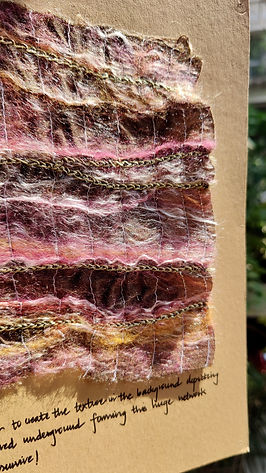
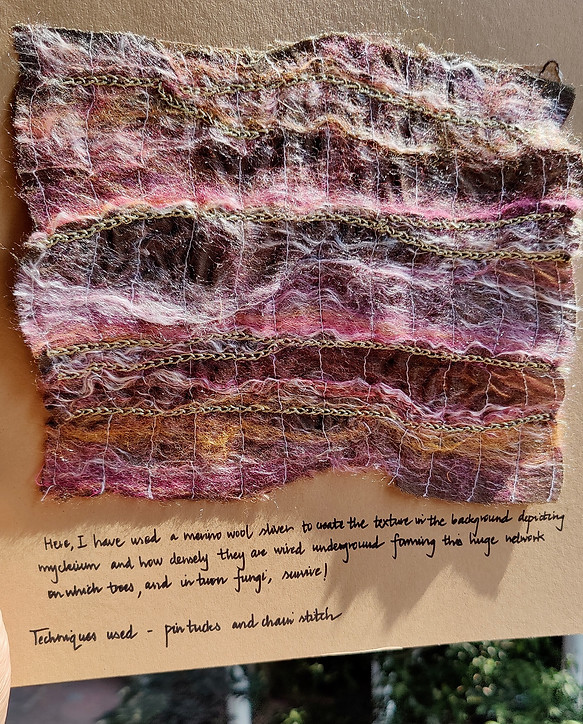
Swatch 04:
A congregation of fungi growing together forms a textured mosaic, where their various surfaces intertwine to create a rich, multi-dimensional tapestry. Thriving in a symbiotic coexistence, ranging from velvety to slightly rough surfaces, depicted through an array of diverse stitches and a vibrant palette of colors.
Base fabric used: Chanderi silk
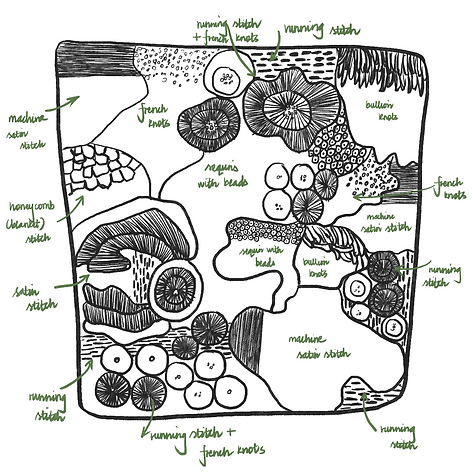
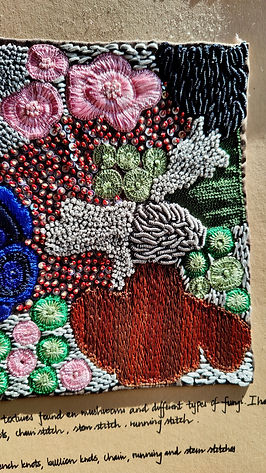
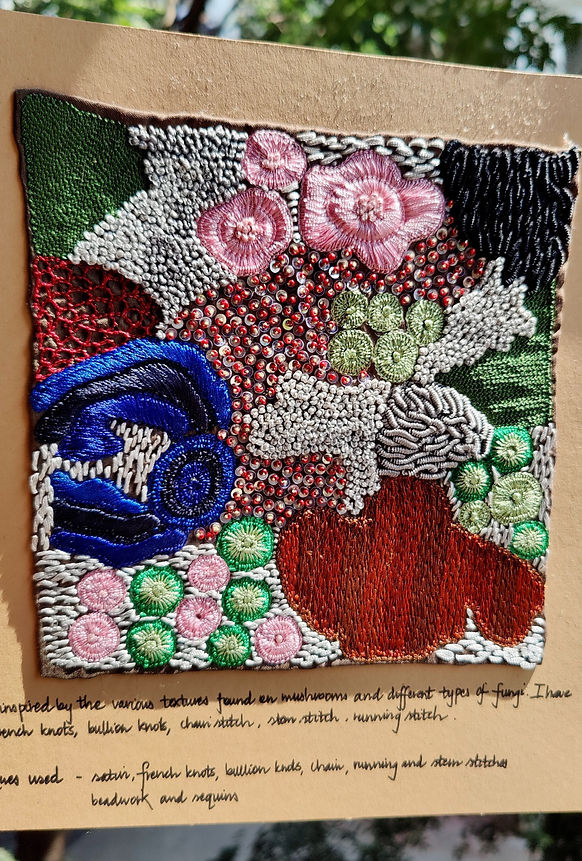
Swatch 05:
This fabric sample conveys the divergence in how people perceive and interpret the mycelium structure and the Wood Wide Web. The Zari mesh fabric elegantly encapsulates the complexity of these networks, done using knife pleats, while the running stitches symbolize the more conventional and simplified understanding that is prevalent among all of us.
Base fabric used: Satin
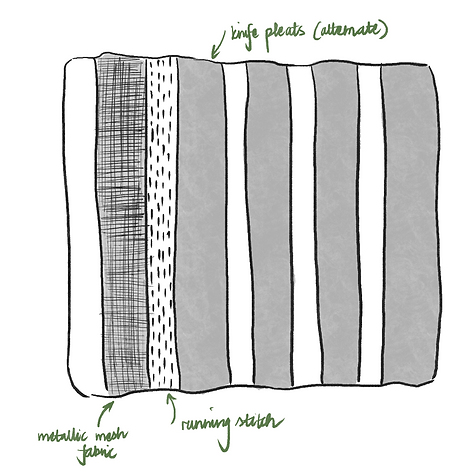


Swatch 06:
The elaborate framework of the Wood Wide Web is brought to life through the use of metallic Zari threads with very intricate chain stitching.
Base fabric used: Silk organza
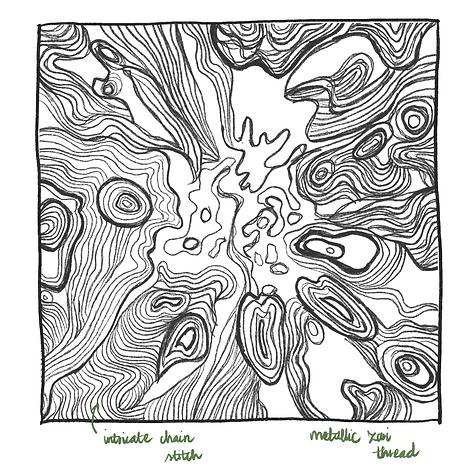
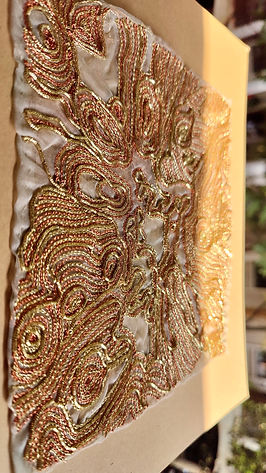
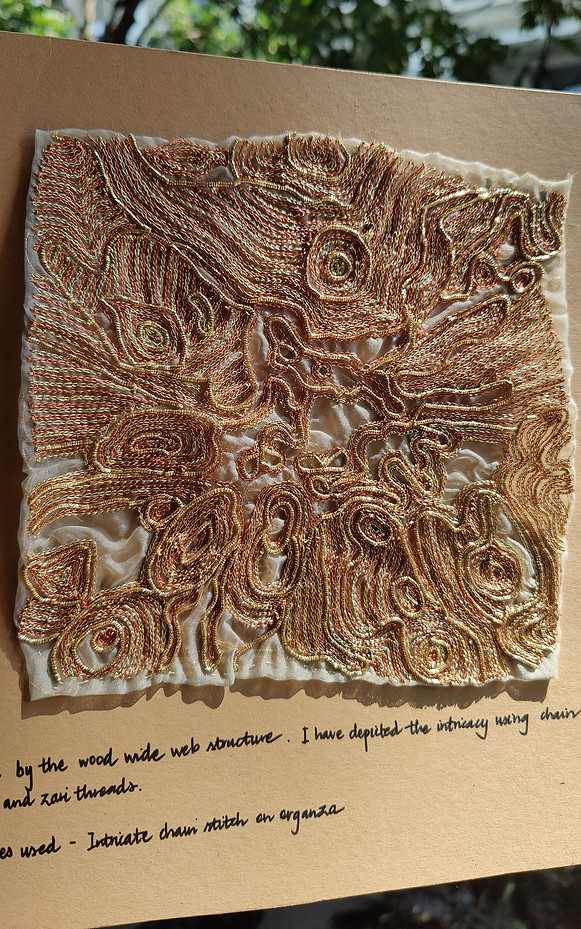
Swatch 07:
The fungi caps offer an array of textures, the essence of their beauty, hence the metallic touch incorporated in this swatch. It serves to highlight the exquisite interplay of diverse textural elements coming together harmoniously.
Base fabric used: Satin
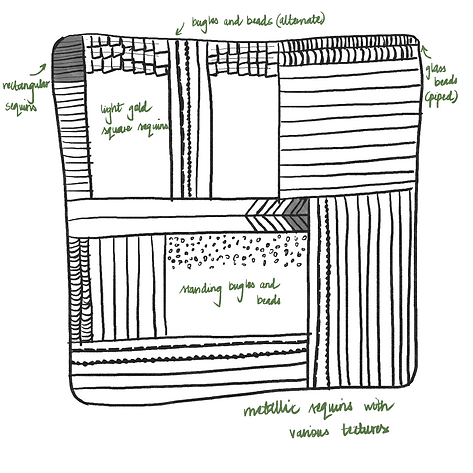
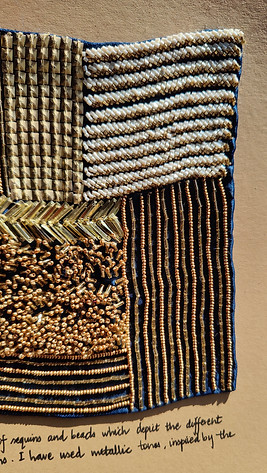
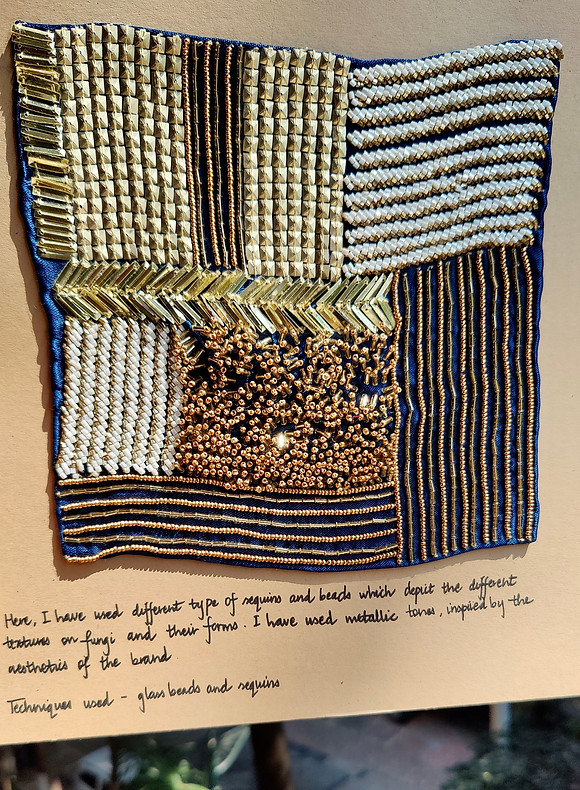
Thanks for scrolling! I am very proud of this hard and time-consuming project, and hope to work on something as fun and rewarding in the future.
